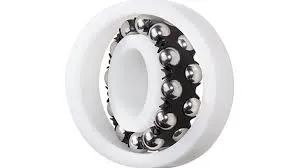
Oct . 11, 2024 04:22 Back to list
30203 bearing
Understanding the 30203 Bearing A Key Component in Mechanical Engineering
In the world of mechanical engineering, bearings play a crucial role in the smooth operation of machinery. Among the vast variety of bearings available, the 30203 bearing is a popular choice, particularly in automotive and industrial applications. This article delves into the specifications, applications, and importance of the 30203 bearing in modern engineering.
Specifications of the 30203 Bearing
The 30203 bearing is classified as a tapered roller bearing. Tapered roller bearings are designed to handle both radial and axial loads, making them versatile components in various mechanical systems. The 30203 designation refers to a specific size and load rating, which is crucial for engineers when designing systems where these bearings will be used.
Typically, the 30203 bearing has an inner diameter of 17 mm, an outer diameter of 40 mm, and a width of about 12 mm. The tapered design allows for a better distribution of load, which enhances the bearing's performance and longevity. The ability to manage high-speed rotational motion while maintaining stability is one of the key characteristics that make the 30203 bearing a preferred choice in many applications.
Applications of the 30203 Bearing
The versatility of the 30203 bearing extends to several industries. One of the most significant applications is found in the automotive sector, especially in transmission systems and wheel hubs. In these contexts, the bearing facilitates smooth movement between parts and reduces friction, which is critical for performance and efficiency.
30203 bearing

In addition to automotive uses, the 30203 bearing is employed in various industrial machinery, including electric motors, conveyor systems, and construction equipment. Its ability to support axial loads while being compact makes it suitable for densely packed assemblies found in modern machines. Also, it is commonly used in agricultural machinery, where reliability and durability are paramount due to harsh working conditions.
Importance in Mechanical Systems
The importance of the 30203 bearing cannot be overstated. It significantly contributes to the overall efficiency and reliability of mechanical systems. The tapered roller design minimizes contact stress between the rolling elements and raceways, leading to less wear and tear over time. As a result, equipment using the 30203 bearing often experiences extended service life, reducing the frequency of maintenance and replacement.
Moreover, the 30203 bearing's capacity to handle both radial and axial loads allows engineers to optimize designs, potentially reducing the number of components needed to achieve the desired performance. This not only enhances efficiency but also lowers production costs.
Conclusion
In conclusion, the 30203 bearing serves as a fundamental component in various applications, particularly in the automotive and industrial sectors. Its robust design, ability to manage loads expertly, and versatility make it an indispensable part of modern mechanical assemblies. As industries evolve towards higher efficiency and productivity, the continued use and development of reliable bearings like the 30203 will remain critical. Understanding these components' specifications and applications is essential for engineers striving to create innovative solutions in mechanical design and manufacturing.
Latest news
-
Grooved Ball Bearing Design and Functionality
NewsJun.04,2025
-
Concrete Mixer Bearing Load Capacity Testing
NewsJun.04,2025
-
6004 Bearing Dimensions in Robotic Joint Designs
NewsJun.04,2025
-
Advantages of Single-Row Deep Groove Ball Bearings
NewsJun.04,2025
-
Applications of Deep Groove Ball Bearings in Automotive Systems
NewsJun.04,2025
-
Innovations in Bearing Pressing Machine Design
NewsJun.04,2025
